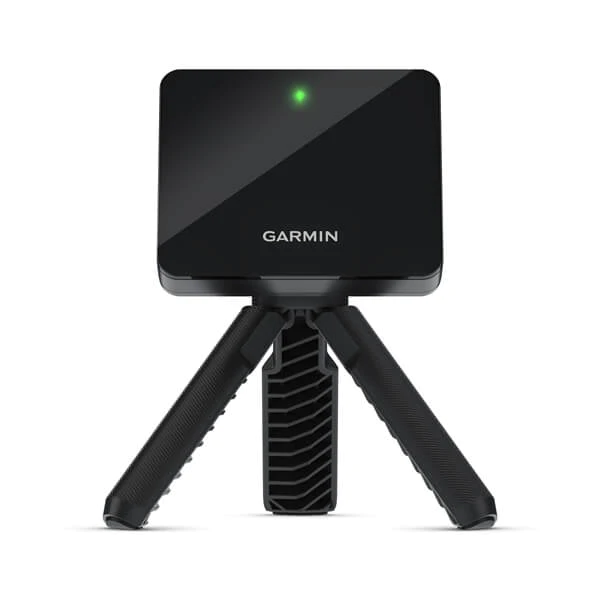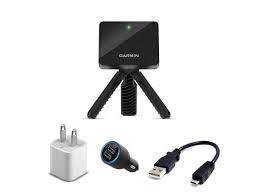Garmin Approach R10 Golf Launch Monitor Review
The personal launch monitor space has exploded in recent years as technology has improved and costs have come down. For golfers looking to dial in their game through data and feedback, having access to accurate club and ball flight metrics can be a huge asset. One of the latest entrants into this competitive market is the Garmin Approach R10.
I recently tested out this new launch monitor extensively to see how it stacks up against the other top options. As a long-time golf enthusiast and gadget lover, I was curious to try out Garmin’s newest offering.
This is a pioneer on the market. Skytrak golf simulator built a bridge between real-world practice and full indoor simulation. It is worth the price and more, since it opens up many possibilities for golf improvement.
$599 from Shop Indoor Golf $599 from Rain or Shine Golf $599 from Top Shelf GolfGarmin’s Entry into the Launch Monitor Market
Garmin is an industry leader when it comes to GPS and wearable technology. Given their expertise with sensors and data tracking, creating a launch monitor seems like a logical product extension.
The R10 enters a crowded playing field, though, with popular incumbents like the FlightScope Mevo and Rapsodo Mobile Launch Monitor as primary competitors. But with Garmin’s history of innovation, I was excited to put the Approach R10 to the test.
First Impressions and Set Up
Straight out of the box, the R10 makes a strong first impression. The included case and molded foam give it more of a premium unboxing experience compared to other models. Weighing just over a pound, the unit itself has a sleek, rugged look. The compact 2′′ x 3′′ design makes it highly portable as well.
Setting up the R10 only takes a couple of minutes. You simply:
- Attach the included tripod stand.
- Sync it with your phone via Bluetooth.
- And it’s ready to start tracking shots.
I didn’t experience any connectivity issues and found the Bluetooth pairing to be quick and reliable.
The unit ships with some welcome accessories too:
- It uses a common USB mini cord for charging rather than a proprietary plug.
- Most useful is the adjustable phone mount that allows you to securely place your device at eye level.
Compared to other launch monitors where you awkwardly balance your phone on the ground or in a pocket, this mount vastly improves the visibility.
Ease of Use
The Garmin Golf app provides an intuitive user interface for the R10. You can choose from different data layouts depending on your preference.
The default “Golfer View” displays a visually impressive tracer showing the arc and direction of each shot along with three key metrics like:
- Carry distance.
- Total distance.
- Spin rate.
More advanced metrics like attack angle, dynamic loft and vertical launch are also available in the “Full Metrics” view. While most average golfers probably don’t need that level of detail, it’s there if you want it.
And the video recording feature lets you save your swing in sync with the data for each shot.
During testing, I found the R10 comfortable to use during full range sessions. The portability, software features and accessory mount all come together to offer a great overall user experience.
My only gripe is the lack of integration currently with Garmin’s own wearables like the Approach watches. Being able to view the R10 data directly on your wrist would provide another nice layer of convenience.

Game-Changing Simulation Features
One major advantage the Garmin R10 provides over competing launch monitors is the built-in simulation functionality. The “Home Tee Hero” feature is a potential game-changer. It taps into a database of 42,000 golf course maps.
You simply select which course you want to virtually play, step up to the tee box of any hole, and you’re ready to go.
As I went through my local home course on the driving range using Home Tee Hero, I was amazed at how accurate the mapping was. When I sliced a 5-iron into the virtual water on a par 3, it mirrored places on the real course where I often struggle.
You can compete head-to-head or play in groups just like an actual round. The only thing lacking is the pressure of having to walk the course itself.
Additionally, the R10 includes access to E6 simulation software and five playable courses. So with the same hardware, you can use your iPad or iPhone to immerse yourself into a full 3D round at iconic courses like Bandon Dunes without any extra costs.
For under $600, gaining this combination of simulation functionality sets a new benchmark for the personal launch monitor category.
Comparing Readings Against Fixed Distances and TrackMan
Of course, the defining measurement for any launch monitor is the fidelity of the data. During multiple range sessions, I tested the R10’s readings against marked distances to fixed targets and compared the numbers to data from a TrackMan.
No portable launch monitor will match the precision of commercial systems costing thousands more. But the key is whether the information can help you develop consistent gapping and feedback on your swing mechanics.
Carry Distance Accuracy
Overall, I found the R10 provided relatively accurate and actionable data, especially related to carry yardages. Across a wide range of clubs, it was usually within 2-3 yards compared to my laser rangefinder measurements.
Only on about 20% of shots was there more significant variance of 5+ yards. Performance was best outdoors in ideal conditions and most consistent with the driver and mid-irons compared to the shorter wedges.
Backspin Rates
One area the R10 does appear to struggle is with backspin rates. Across clubs, it generally read lower than Trackman by an average of around 400 rpm.
So this is one metric I’d hesitate hanging my hat on for dialing in wedge play for example. However, the algorithms continue to improve through wireless software updates.
Auto-Shot Tracer
The auto-shot tracer functionality provides impressive visuals of each shot’s ball flight too. During testing, it accurately depicted draws, fades and even lower piercing ball flights.
So while the exact data may have outliers, I developed a level of trust in using the R10’s tendencies as a way to work on consistency.
Garmin Golf Membership and Pricing
Like many tech products today, there is an optional subscription tied to the R10 to unlock access to some features.
You get a free 30-day trial of the Garmin Golf membership which then costs $9.99 monthly or $99.99 annually thereafter.
Two of the key benefits tied to this membership are:
- Continued access to the Home Tee Hero virtual courses.
- Ability to store video recordings of all your shots.
The E6 software courses and core functionality still work without the paid membership. But losing access to the 42,000 simulated courses would be a major blow considering the entertainment value they provide.
For most golfers serious about using the R10 to its full potential, the membership will prove a worthwhile investment.
In terms of upfront pricing, the Garmin R10 retails for $599.99 which positions it at the higher end amongst standalone launch monitors best suited for serious amateurs.
Things like the Swing Caddie SC300i can be had for under $500, while the SkyTrak packs more performance for several hundred dollars more. So the R10 sits in an interesting middle ground catering to golfers unwilling to pay over $1,000 but who also want greater functionality than the most budget-friendly options provide.
Compared specifically to the FlightScope Mevo and Rapsodo MLM+, the R10 holds its own and even exceeds them in some areas like entertainment features. But golfers obsessed with dialing in their wedge play through incredibly precise spin rates may still want to pay extra for those alternative options.
Why I Recommend the Garmin R10
After extensive testing over an entire season with the Garmin Approach R10 launch monitor, I believe it firmly deserves its place among the top devices golfers can buy for under $1,000.
The accuracy and data, while not flawless, will prove perfectly suitable for most players to develop consistent yardage gaps and get meaningful feedback on their swing performance.
But it’s the ancillary features like shot tracer, video capture and especially the virtual course play where the R10 separates itself.
Garmin has focused heavily on supplementing the raw data with layers of convenience and play that make practicing with this launch monitor an absolute blast.
If you’re an avid golfer looking for tournament-level precision, it may leave you wanting more. But for the vast majority of amateurs seeking meaningful insights and entertainment, the R10 hits the mark.
So do I recommend the Garmin Approach R10? Without hesitation. No device packs more value under $600. The accuracy is sound, the metrics detailed, and the user experience second to none.
If you’re eager to have more fun fine-tuning your golf game through technology, this should be at the top of your wishlist.
Garmin has scored an impressive win for the personal launch monitor market with the Approach R10.
Key Takeaways
- The Garmin R10 provides accurate carry distance yardages to help dial in your gaps.
- Built-in simulation features like virtual course play set it apart from competitors.
- An optional $99 annual membership unlocks video recording and simulations.
- Easy portability, accessory mount and user-friendly interface.
- Struggles slightly with backspin data compared to commercial monitors.
- Overall excellent value under $600 for most amateur golfers.
Frequently Asked Questions
It provides relatively accurate carry yardage distances, usually within 2-3 yards of fixed targets. Struggles more with backspin rates which read lower than commercial monitors. Overall suitable accuracy for most amateur golfers under $600.
An optional $99 annual Garmin Golf membership unlocks video recording and virtual course simulation access. But core functionality still works without the subscription.
The “Home Tee Hero” feature taps into 42,000 mapped golf courses. You pick the hole, step up to tee, take your shot into a virtual rendering of that exact hole for entertainment.
Yes, it works indoors and outdoors. But accuracy is best outdoors with room for ball flight. Use limited flight practice balls indoors.
Top competitors are the FlightScope Mevo and Rapsodo Mobile Launch Monitor. R10 holds up against both while exceeding in simulation features.
No integration currently with Approach watches, but future updates could sync R10 data to wearable devices for more convenience.
Very portable at 1 pound with a compact, rugged design. Takes only 2 minutes to attach the stand, sync Bluetooth, and start hitting shots.
Yes! Comes with E6 software and 5 playable course environments. Use your mobile device to play full 3D rounds at iconic courses.
Backspin readings lag behind commercial monitors currently. But software updates and algorithm refinement will likely continue improving accuracy over time.
Serious amateur golfers who want accurate carry distances, swing feedback, virtual entertainment and video recording under $600. Not for pros needing ultra-precise backspin rates.


